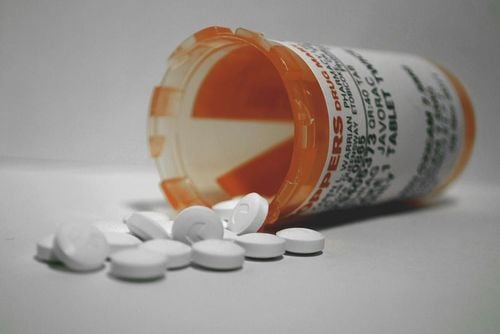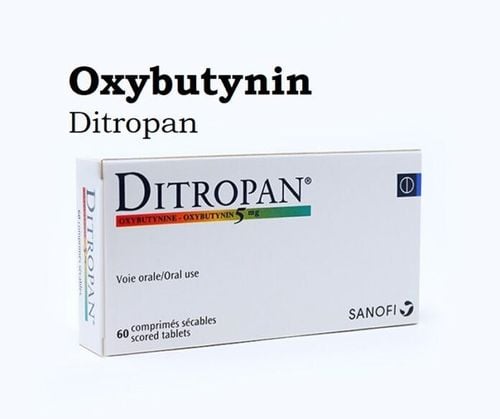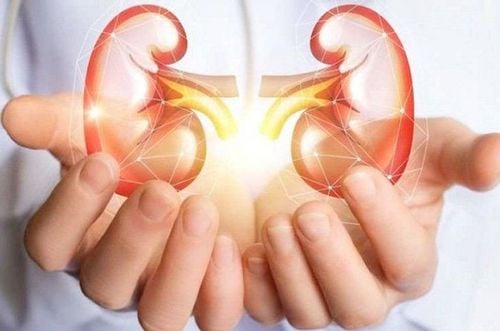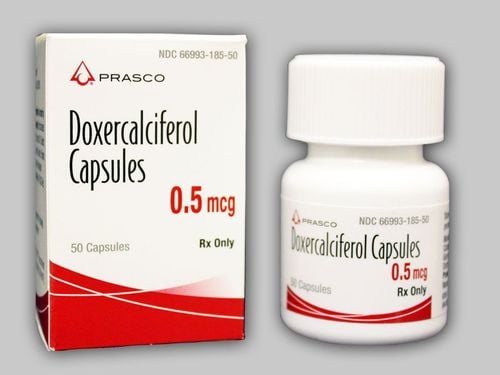This is an automatically translated article.
Kidneys are organs that help the body perform two tasks of excretory and endocrine. There are different tests to calculate kidney function. In particular, the measurement of glomerular filtration rate eGFR is the best test to test the glomerular filtration rate.
1. Tests to probe glomerular function
Kidneys are vital organs with the role of regulating the body's homeostasis. How many methods are there to test glomerular function? The kidneys need a lot of functions to do their job, so there are also different tests to help monitor kidney function, namely:
Measurement of clearance of inulin, mannitol, sodium thiosulphate or endogenous creatinine ; Estimation of creatinine clearance by serum creatinine concentration; Assess glomerular filtration rate by measuring b2-microglobulin levels; Measurement of glomerular filtration rate by radioisotope. However, each test reflects only some of the glomerular function, not all of it. Tests of renal function, although valuable, are influenced by many factors both intrarenal and extrarenal. Therefore, when analyzing the results of each test, it is necessary to pay attention to this feature.
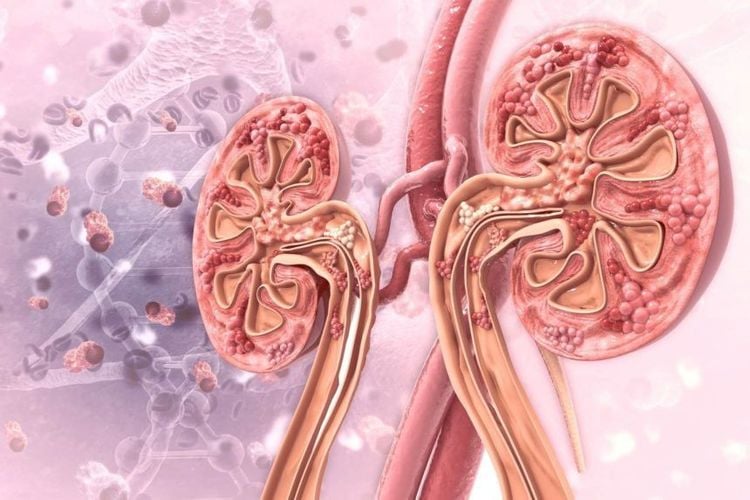
Cầu thận có chức năng quan trọng
2. What is the eGFR test?
eGFR stands for estimated Glomerular Filtration Rate. This value indicates how well the kidneys filter wastes out of the blood and helps determine if kidney damage is present. Although there are many different tests to measure kidney function, eGFR is still considered the best measure of kidney function. The higher the glomerular filtration rate, the better the kidneys work, usually around 90-100 ml/min.
In case the doctor orders a blood test to know more about kidney function, the eGFR will be calculated and returned by the laboratory. In order to accurately calculate the kidney's ability to function, experts have built a special GFR estimation formula with the following 3 factors:
Age; Sex; The level of creatinine in the blood. Formula:
eGFR (mL/min/1.73m2) = 186.SCr-1,154.Age-0.203.(0.742 for female).(1.21 for African-American)
where SCr is the main concentration blood creatinine level (mg/dL). Doctors say that the kidneys normally remove creatinine from the blood before excreting it in the urine. So when kidney function decreases, more creatinine remains in the blood.
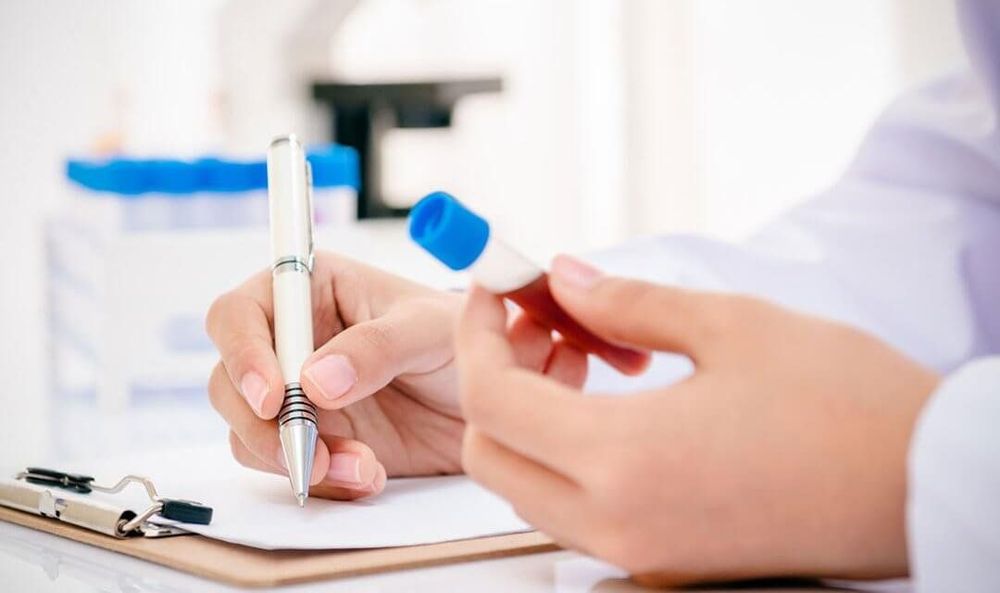
Creatinin trong máu được phân tích
Formula 1: Based on the creatinine in blood and urine Collect 24-hour urine to measure the volume and amount of creatinine excreted. Simultaneous measurement of blood creatinine concentration collected in the middle of the urine collection interval.
CrCl (mL/min) = (UCr.V urine)/(SCr.T)
Where:
CrCl: Creatinine clearance Ucr: Urine creatinine concentration (mg/dL) Urine V: Volume urine collected (mL) SCr: Blood creatinine concentration (mg/dL) T: Time to collect urine (minutes)
Formula 2: Corkroft-Gault for Adults In order to avoid miscalculation of creatinine clearance values, researchers have developed different estimation methods from serum creatinine values and based on the characteristics of the serum creatinine. patient.
For adults 18 years of age and older and not too obese, the commonly used formula suggested by Cockcroft and Gault is as follows:
Male: Estimated CrCl = [(140 – age).weight]/ (72.SCr)
Female: Estimated CrCl = [(140 – age).weight]/(72.SCr)
Where:
Estimated CrCl: Estimated creatinine clearance (mL/min) Age: In years Weight: In kg SCr: Serum creatinine concentration (mg/dL) In women, the above formula needs to be multiplied by 0.85 because women weigh less than men, so the amount of creatinine produced each days less.

Xét nghiệm được thực hiện tại các cơ sở y tế uy tín
Formula 3: Based on MDRD formula MDRD equation - Modification of Diet in Renal Disease:
GFR (mL/min/1.73 m2) = 175 × (Scr)-1.154 × (Age)-0.203 × (0.742 for female) × (1,212 for Africans)
Where:
eGFR: Estimated glomerular filtration rate; SCr: Blood creatinine concentration (mg/dL); Age: Age of the patient.
3. How to read eGFR . results
Normally depending on the laboratory, GFR results may be reported as the exact true value as mL/min/1.73m2 (if eGFR < 90) or displayed as > 90 mL/min/1.73m2. .
Example:
Result 105: May display as 105 mL/min/1.73m2 or as ≥ 90 mL/min/1.73m2 Result 67: Displayed as 67 mL/min/1.73m2 3.1 . Results > 60 mL/min/1.73m2 Renal function is normal or near normal, but there is still a risk of kidney damage or kidney disease. Therefore, patients still need to continue to be monitored, especially those with high risk factors.
There are also cases of patients being diagnosed with chronic kidney disease (CKD) if signs of kidney damage appear and persist for more than 3 months. If there are no abnormalities, kidney function should be monitored while following your doctor's advice for a healthy lifestyle.

Khi kết quả bất thường, bác sĩ là người đưa ra lời khuyên cho bạn
3.2. In case the result is < 60 mL/min/1.73m2, it shows a partial loss of kidney function. To confirm, your doctor may order a repeat blood test and monitor eGFR changes to see if the disease is progressing quickly or slowly.
Diagnostic signs of chronic kidney disease (CKD) include:
A GFR result of less than 60 mL/min/1.73m2 for more than three months; Some signs of kidney damage: Albuminuria (albumin in urine), hematuria (blood in urine), blood pressure, diabetes, abnormal ultrasound results or kidney biopsy.
4. Stages of Chronic Kidney Disease (CKD)
Depending on the eGFR index, kidney function will be classified into the following stages:
Stage 1: Normal ≥ 90 mL/min/1.73m2 Stage 2: Mild decrease in the range of 60 - 89 mL/ min/1.73m2 Stage 3: 3a: Mild - moderate reduction in range 45 - 59 mL/min/1.73m2 3b: Moderate - strong decrease in range of 30 - 44 mL/min/1.73m2 Stage 4: Decrease strong in the range of 15 - 29 mL/min/1.73m2 Stage 5: Drop below 15 mL/min/1.73m2 or initiate dialysis The results of eGFR and albuminuria are combined to provide an overview of the the kidney's ability to function, from which the doctor will decide the best treatment. The choice of treatment method also depends on the cause of kidney damage. In particular, controlling diabetes and high blood pressure can help slow or prevent the disease from getting worse. This also limits the risk of other health problems, such as heart attack and stroke.

Khi sức khỏe có biểu hiện bất thường, bạn nên đến cơ sở y tế để được thăm khám
In summary, glomerular filtration rate measurement is the most important test to help assess the glomerular filtration function. The estimated glomerular filtration rate eGFR is the initial volume of filtrate (first urine) filtered by the glomerulus per unit time. Based on the eGFR results and a number of other relevant tests, the doctor will understand the functioning of the kidneys to make a diagnosis and treatment, or give useful advice to the patient.
Recommended video:
Periodic health check at Vinmec: Protect yourself before it's too late!
MORE:
Find out about a test to assess glomerular filtration rate What is an estimated glomerular filtration rate (eGFR)? What is the normal glomerular filtration rate?




